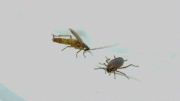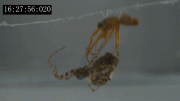
After examining two large databases of traits in spouses, researchers discovered that the tendency for individuals to mate with others who possess similar traits (known as cross-trait assortative mating) is strongly linked to genetic correlation estimates and likely plays a significant role in these estimates.
According to researchers, mating patterns may be able to explain many of the relationships between traits that were previously thought to be biological.
A new study led by the University of California, Los Angeles suggests that current methods for evaluating the genetic connections between traits often overlook the influence of mating patterns, leading to inflated estimates of the strength of the genetic link between traits and diseases.
Scientists have been using powerful genome sequencing technology to try to uncover the genetic connections between traits and disease risk in recent years, hoping that this knowledge could lead to new disease treatments. However, a study conducted by UCLA and published in the journal Science warns against relying too heavily on genetic correlation estimates, as these estimates may be distorted by non-biological factors that have not been fully taken into account.
Genetic correlation estimates typically assume that mating is random. But in the real world, partners tend to pair up because of many shared interests and social structures. As a result, some genetic correlations in previous work that have been attributed to shared biology may instead represent incorrect statistical assumptions. For example, previous estimates of genetic overlap between body mass index (BMI) and educational attainment are likely to reflect this type of population structure, induced by “cross-trait assortative mating,” or how individuals of one trait tend to partner with individuals of another trait.
The study authors said genetic correlation estimates deserve more scrutiny since these estimates have been used to predict disease risk, glean for clues for potential therapies, inform diagnostic practices, and shape arguments about human behavior and societal issues. The authors said some in the scientific community have placed too much emphasis on genetic correlation estimates based on the idea that studying genes, because they are unalterable, can overcome confounding factors.
“If you just look at two traits that are elevated in a group of people, you can’t conclude that they’re there for the same reason,” said lead author Richard Border, a postdoctoral researcher in statistical genetics at UCLA. “But there’s been a kind of assumption that if you can track this back to genes, then you would have the causal story.”
Based on their analysis of two large databases of spousal traits, researchers found that cross-trait assortative mating is strongly associated with genetic correlation estimates and plausibly accounts for a “substantial” portion of genetic correlation estimates.
“Cross-trait assortative mating has affected all of our genomes and caused interesting correlations between DNA you inherit from your mother and DNA you inherit from your father across the whole genome,” said study co-author Noah Zaitlen, a professor of computational medicine and neurology at UCLA Health.
The researchers also examined genetic correlation estimates of psychiatric disorders, which have sparked debate in the psychiatric community because they appear to show genetic relationships among disorders that seemingly have little similarities, such as attention-deficit hyperactivity disorder and schizophrenia. The researchers found that genetic correlations for a number of unrelated traits could be plausibly attributed to cross-trait assortative mating and imperfect diagnostic practices. On the other hand, their analysis found stronger links for some pairs of traits, like anxiety disorders and major depression, suggesting that there truly is at least some shared biology.
“But even when there is a real signal there, we’re still suggesting that we’re overestimating the extent of that sharing,” Border said.
Reference: “Cross-trait assortative mating is widespread and inflates genetic correlation estimates” by Richard Border, Georgios Athanasiadis, Alfonso Buil, Andrew J. Schork, Na Cai, Alexander I. Young, Thomas Werge, Jonathan Flint, Kenneth S. Kendler, Sriram Sankararaman, Andy W. Dahl and Noah A. Zaitlen, 17 November 2022, Science.
DOI: 10.1126/science.abo2059
The study was funded by the National Institutes of Health, the Chan Zuckerberg Initiative, the National Science Foundation, Open Philanthropy, and the Wellcome Trust.









Be the first to comment on "Current Methods for Assessing Genetic Relationships Between Traits are Flawed"